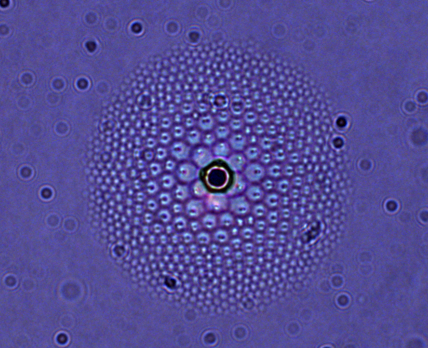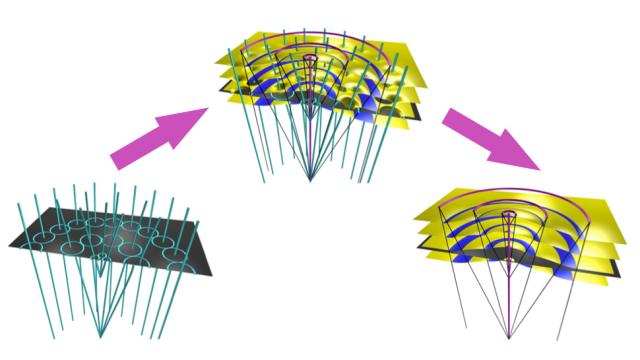Imagine if objects built themselves. You just dump raw material into a bucket, wait 10 minutes, and BOOM: it’s a beautiful crystal. Turns out this is actually possible using a process called directed assembly.

A team of scientists from the University of Pennsylvania recently used this method to build tiny flower-shaped liquid crystals that can be used as lenses. As the name implies, directed assembly is essentially a manufacturing process that’s driven by a set of predetermined instructions.
As the university put it in a press release, this group of scientists “precisely defined starting conditions and let the physics and chemistry that govern those components do the rest.” It’s kind of like liquid 3D printing with a set of instructions and the laws of nature.
These pretty liquid-crystal flowers started out as a simple silica bead that was dropped into the mix along with a template that dictated how the crystal would assemble around the bead. Think of the template like scaffolding that’s designed to create defects in the liquid crystal’s natural form. These defects then help the resulting material to act as a lens, giving it interesting optical effects, similar to an insect’s eye. As the liquid crystal tries to gather around the silica bead and match the earlier angles, the template steers it into a flower pattern. The illustration of the process above is from a newly published paper about the liquid crystals by the UPenn scientists.
Directed assembly is used for much more than making liquid crystal flowers. All kinds of nanostructures can be built using this method, allowing scientists to avoid the difficulty of manipulating tiny, individual parts. Kinda magical, huh? [UPenn]
